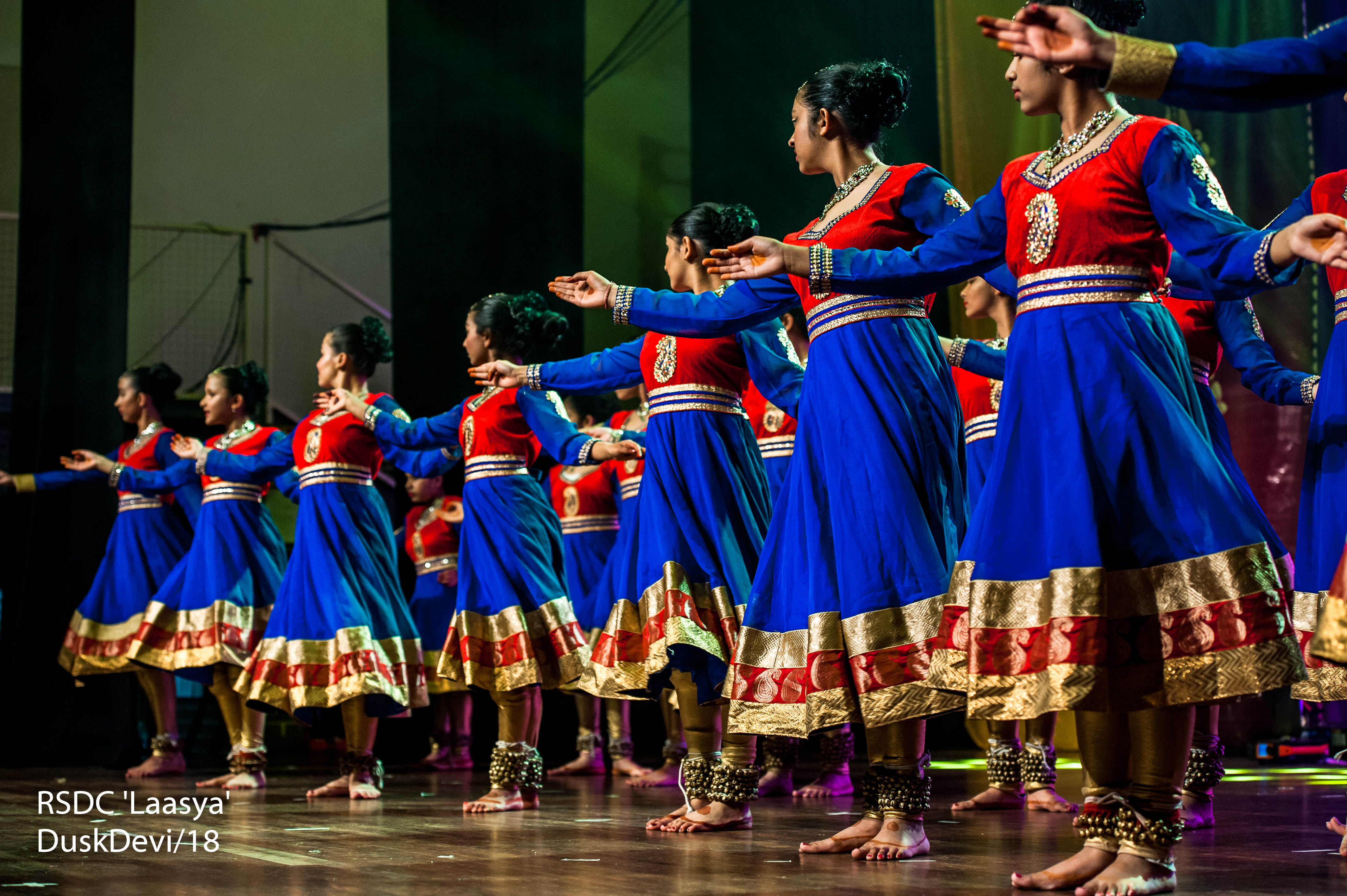‘Katha’ meaning story and its practitioners being those who told these stories.
This classical dance form from Northern India is known for its dynamic footwork, precise and fast whirling movements and subtle, evocative ‘abhinaya’ or mimetic dance.
Kathak has a long history in the courts of emperor’s and kings.
The physical technique of Kathak is both sharp and lyrical. A balance.
There is even a combination of both linear and circular movements which make the form simultaneously sharp and quick as well as melodic and flowing. Emerging through the post modern times, many dancers have ventured into exploring new ways of movement and finding their own artistic expression.
There are three main Gharanas, or schools of Kathak. These schools are named according to the geographical area in which they developed.
These are the Jaipur, Lucknow and the Benares Gharanas. Each has a slight difference in interpretation and repertoire.
RSDC mainly practices the Benares Gharana of Kathak in Shri Gopi Krishna’s style, but at more advanced levels students are exposed to compositions from all three Gharanas.
See CLASSES
According to scriptures Indian dance forms were created when Lord Shiva danced Tandav to destroy the universe and in the process the sounds and movement patterns he created gave birth to yoga (Shiva being the ultimate Yogi) and all the other Indian dance forms.
Indian dance forms mimic the movement of all the elements in the universe. Movement of the Sun, the Moon, tides, breathing are all cyclical and so are our rhythmic cycles.
Kathak is steeped in Indian philosophy, history and spirituality which explains its universal appeal.
Kathak is characterized by complex rhythmic patterns.
The compositions in Kathak are based on rhythmic cycles, the most popular being ‘teental’ a cycle of 16 beats, and mathematical in nature.
Every time a kathak dancer performs, they have to prepare and recite calculations beforehand. For instance; laying a three-count foot-stamping phrase over a four-count musical phrase, and how to fit fives into sixteens.
Kathak dancers are therefore expert mathematicians who can create and calculate all the complex rhythmic patterns organically through their body movement.
